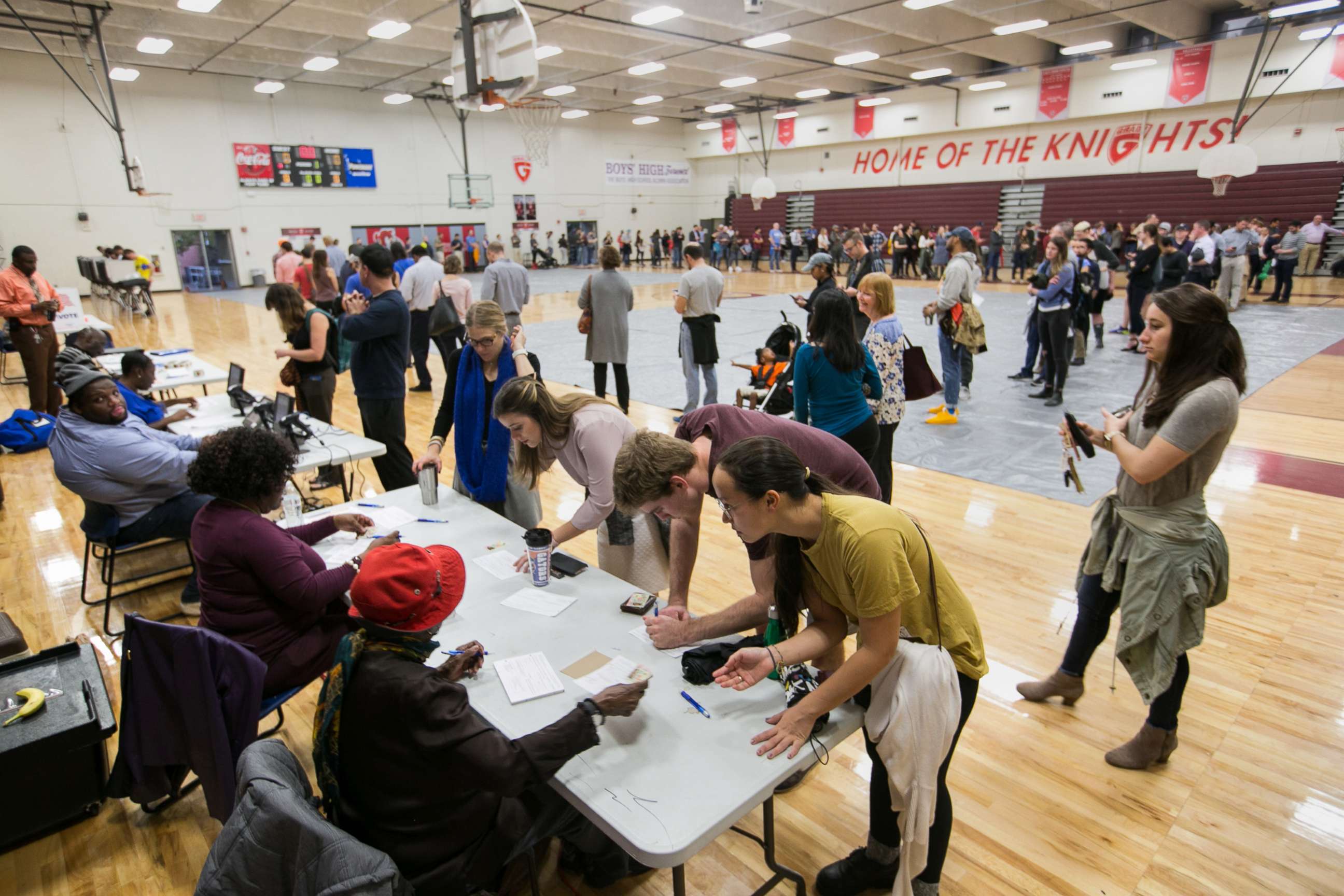Post-midterms, Americans are still waiting for a national leader: ANALYSIS
Both parties have something to cheer about -- and to lament.
After a historic midterm election that saw an estimated 113 million Americans cast their ballots and elect the most diverse group of leaders ever in America, many are wondering what it all means.
2018 saw the highest raw vote in a midterm and the highest percentage of voter turnout since before 18-year-olds were given the right to vote. Both parties have something to cheer about and both parties have a good bit to lament. The overall margin favoring the Democrats was approximately 8 percent, or roughly 9 million votes. They took back the House, picked up numerous gubernatorial and state legislative wins, and progressive measures won at the state ballot box. But they also fell further behind in the Senate, lost some key races in Florida and Ohio, and continue to lose ground in the rural areas and small towns of America.

For its part, the GOP picked up seats in the Senate, won some key races in Florida and Ohio, and limited their House losses. But they were beaten badly in the popular vote, and continued to lose ground in the suburbs, especially among women. They also fared badly among young people.
So what do these results mean for both parties? Examining the results from a higher altitude, here are the three major takeaways from this election.
The divide between geography and demography is deepening
In 2016, we saw a titanic battle between the powerful forces of geography and demography. The GOP has continued to perform better in large geographic portions of America, winning around 2,600 counties in 2016 and losing only 500.
Meanwhile, the Democrats continue to build margins among the fastest-growing parts of the electorate: people of color, young voters, single women, and folks with college degrees. The outcome in 2016 was a split decision between the forces of geography (represented by the electoral college) and demography (represented by the popular vote).
In the midterms, we saw this dynamic unfold once again. The Democrats built up an ever-larger popular vote margin, but simultaneously lost ground in the Senate. If these midterms had been an electoral college vote, Democrats would have picked up Pennsylvania and Michigan, but Florida, Wisconsin, Iowa, Ohio and Arizona would have gone down to the wire as to who would have won.
This should be of concern to both parties for 2020. It is becoming increasingly difficult for the GOP to win the national popular vote, and the playing field in the electoral college for Democrats puts them at a disadvantage. Each of the major political parties are able to run up points in home games, but have a difficult time scoring in away games.
Trump still has a popularity problem
President Trump could validly claim some successes from this election, but his political advisers should be concerned about his approval numbers on Election Day.
For all of the anger and disapproval of past presidents at midterm time, including Obama, Bush, Clinton, Reagan, and Carter, not one has had as many people say they strongly disapprove of them on Election Day as Trump.

Nearly a majority of Americans (46 percent) who voted Tuesday said they strongly disapproved of the president’s performance in office, according to a national ABC News exit poll, with strong critics outnumbering strong supporters by a 15-point margin. It's an astoundingly high number, especially when you consider the positive economic indicators Trump has enjoyed. The number of jobs and the stock market have both continued to grow, but Trump is performing below the normal job approval rating in an economy like this by 20 points.
And the number of people who strongly disapprove of him is especially negative among some of the groups who make up the fastest-growing part of the electorate. President Trump, if he cares to possibly win the popular vote in a 2020 re-election, would need to do some dramatic shifts in tone, strategy, and communication to make that happen.
Americans are still waiting for a national leader
My fear is both parties will learn the wrong lessons from this midterm. The GOP will think the Trump way works because they will point at certain evidence, when in fact they should be asking what's holding them back from bigger electoral wins under such a good economy.
The Democrats will concentrate on the House wins, and not look at the great expanse of America they are continuing to lose ground in, even with large national popular vote margins.
In order to win both demographically and geographically, each side has to figure out what message and candidates appeal to both.
And it isn’t about ideology or some point on the political spectrum: it is about how a candidate is culturally aligned with an area or population.
A progressive message can work in red areas as long as it fits in culturally through authentic words and alignment. Likewise, a conservative message can work in blue states if it does the same culturally.
There is a path to success in uniting our country, and Americans are still waiting for that national leader to emerge to guide us down it.
Matthew Dowd is an ABC News analyst and special correspondent. Opinions expressed in this column do not necessarily reflect the views of ABC News.




